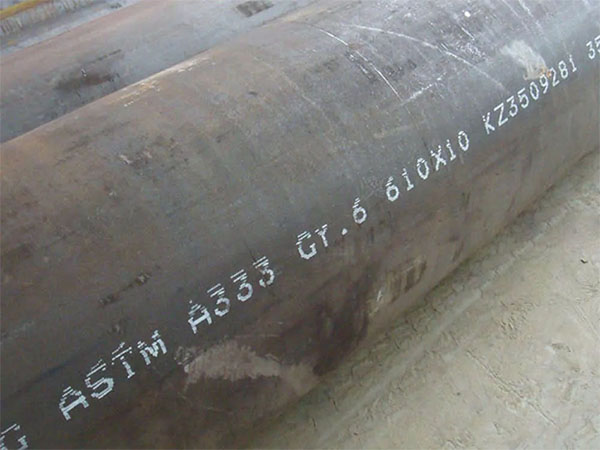Low temperature carbon steel pipes refer to carbon steel pipes specifically used in low-temperature environments (typically -50 ℃ to 0℃, or even lower). Compared with common carbon steel pipes, its chemical composition, microstructure and mechanical properties have been specially regulated and tested to ensure sufficient toughness and impact resistance at low temperatures and to avoid brittle fracture due to sudden temperature drops.
The influence of low-temperature environment on carbon steel
Low-temperature brittleness: Ordinary carbon steel is prone to brittle fracture at low temperatures, with a significant decline in toughness, especially when the temperature is below the brittle transition temperature (DBTT), the risk is even higher.
Special heat treatment processes (such as normalizing and tempering) are usually adopted to refine the grains and reduce brittleness.

Manufacturing process and form
Seamless pipe
By using drawing or cold drawing processes, the surface wall thickness of the pipes is uniform, with few weld defects, and they have excellent pressure resistance and low-temperature resistance.
2. Straight seam welded pipe (ERW/LSAW)
Resistance welding or submerged arc welding has a relatively low cost, but it is necessary to strictly monitor the weld seam flaw detection and impact tests.
3. Spiral welded pipe
It is suitable for large-diameter and long-distance pipelines, and low-temperature impact tests need to be conducted on bevels and welds.
In terms of pipe fittings, low-temperature carbon steel pipes can be processed into the following accessories and need to be matched with pipe components of the same standard.
Straight pipe sections: fixed-length pipes, cut pipes;
Pipe fittings: elbows, tees, flanges, butt welds, etc.
Main criteria
ASTM A333/A333M
It is applicable to seamless and welded carbon steel pipes, with grades covering Gr.1, Gr.3, Gr.6, etc. The minimum design temperature can reach -46 ℃ (Gr.6 can reach -101 ℃).
ASTM A350/A350M LF2, LF3
Low-temperature forging standards are often used in conjunction with pipe fittings to ensure the low-temperature toughness of flanges, elbows and other connecting parts.
ASME B31.3 / B31.1
The design code for chemical and power pipelines sets out consistency requirements for the material selection, process and inspection of low-temperature carbon steel pipes.
Inspection and quality control
Chemical composition analysis: Spectral or chemical analysis to ensure that the contents of elements such as C, Mn, S, and P meet the standard limits.
Metallographic examination: Inspection of grain size, precipitates and loose cracks.
Mechanical property tests: tensile, yield, elongation; The low-temperature shock test (Charpy V-notch) must pass the minimum absorbed energy at the specified temperature.
Non-destructive testing: Ultrasonic or radiographic testing, especially for welds and heat-affected zones; Eddy current testing can be used for thin-walled tubes.
Hydraulic test: Conduct hydraulic tests according to the pipeline grade to inspect the overall sealing performance and pressure-bearing capacity.
Application field
Liquefied natural gas (LNG) : transportation pipelines, storage tanks, valves.
Chemical industry: Equipment for handling low-temperature media such as liquid nitrogen, liquid oxygen, and liquid argon.
Refrigeration system: cryogenic compressor, low-temperature heat exchanger.
Polar engineering: Oil and gas pipelines and infrastructure in the Arctic or Antarctic regions.
Alternative materials for low-temperature carbon steel pipes
Austenitic stainless steel (such as 304L, 316L).
Nickel-based alloys (such as Invar 36, 9% nickel steel).
Aluminum alloy or titanium alloy.
